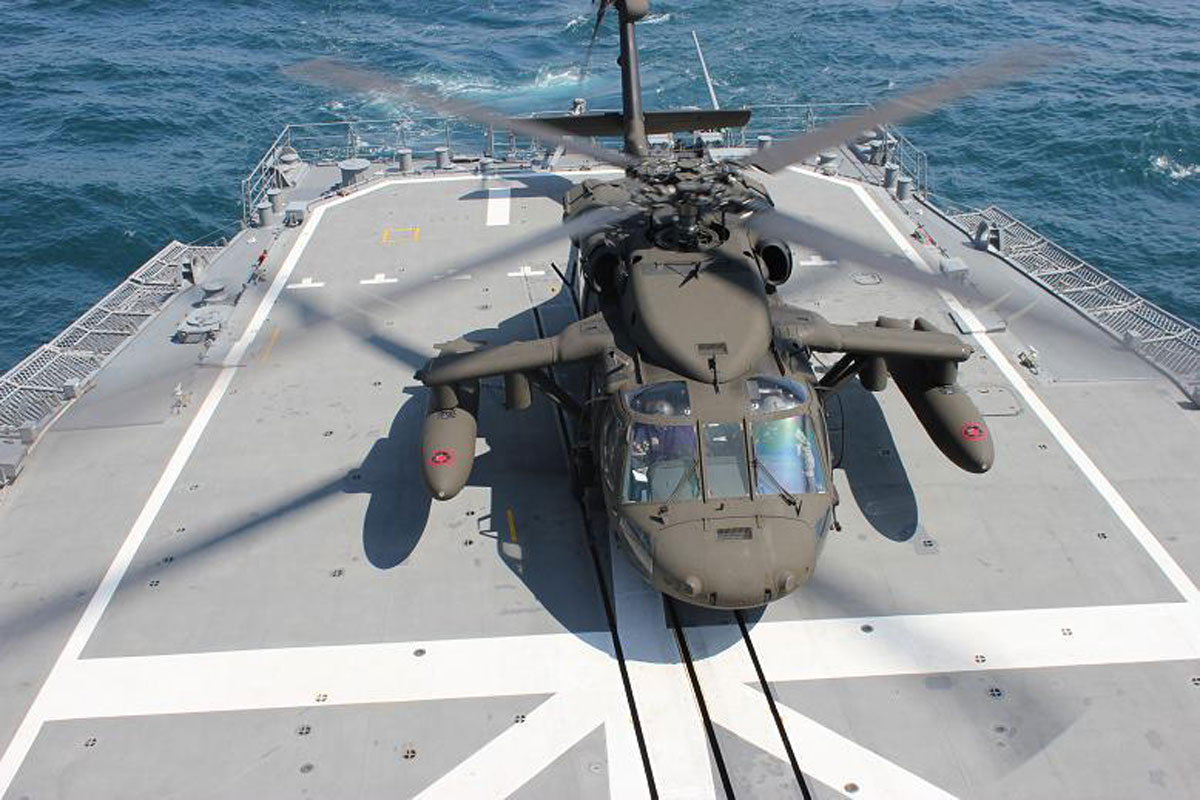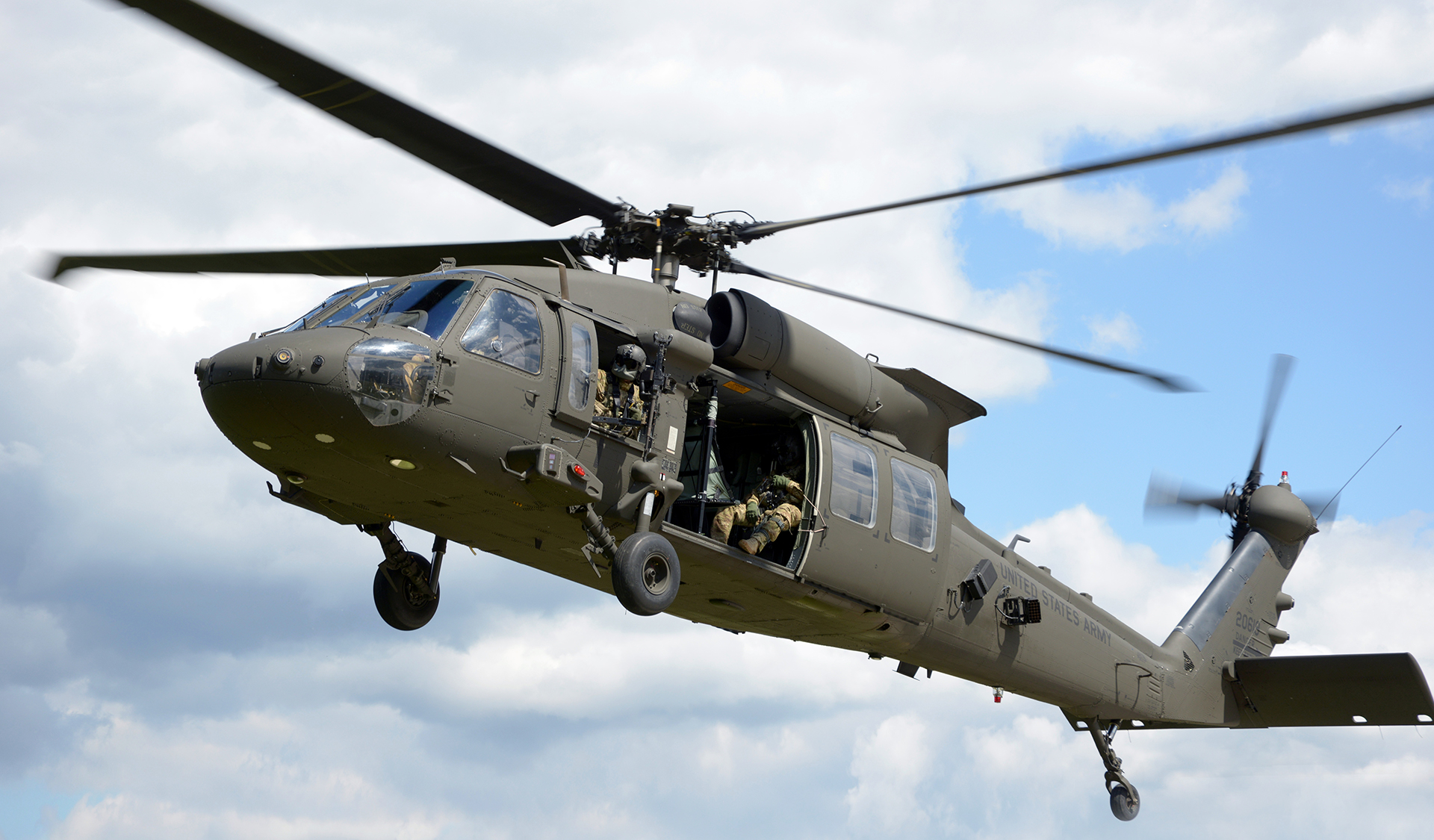Exactly how the UH 60's Versatility Supports Both Fight and Humanitarian Initiatives
Exactly how the UH 60's Versatility Supports Both Fight and Humanitarian Initiatives
Blog Article
UH-60: Innovations in Modern Helicopter Style
The UH-60 helicopter stands as a benchmark in modern-day aviation, showcasing substantial developments in style and innovation that accommodate the progressing needs of military procedures. Its consolidation of innovative products not just enhances performance yet likewise addresses important safety concerns. The integration of innovative avionics has changed operational capacities, allowing for better situational awareness and decision-making performance. As we explore the development and key advancements of the UH-60, it becomes crucial to think about just how these developments affect not just present applications yet also the future landscape of helicopter style.

Evolution of the UH-60
The evolution of the UH-60 Black Hawk helicopter stands for a substantial turning point in aerospace engineering and army aeronautics. Introduced in the late 1970s, the UH-60 was designed by Sikorsky Airplane to satisfy the United States Army's demand for a flexible utility helicopter with the ability of performing a selection of objectives. Its style emphasized maneuverability, rate, and toughness, setting brand-new standards for functional performance.
The UH-60 includes an unique four-blade blades system, which improves lift and stability, permitting it to operate efficiently in diverse atmospheres. Its airframe is constructed from innovative composite materials, adding to a reduction in weight while preserving structural stability. The helicopter's design likewise incorporates better the rules of aerodynamics, which improves fuel efficiency and boosts array.
Throughout the years, the Black Hawk has gone through numerous upgrades to enhance its abilities, consisting of improved engines, advanced trip control systems, and modular systems for very easy upkeep and adaptability. The helicopter's capability to execute goals ranging from army transportation to clinical evacuation has solidified its function as a foundation of united state army procedures. The UH-60 Black Hawk remains an archetype of exactly how advancement in helicopter layout can significantly impact armed forces efficiency and functional versatility.
Advanced Avionics Solutions
Improvements in avionics systems have actually changed the capacities of modern-day helicopters like the UH-60 Black Hawk, boosting functional efficiency and situational recognition (UH 60). The assimilation of innovative avionics permits boosted navigation, flight, and communication monitoring, making the UH-60 extra versatile in diverse objective profiles
One of the key attributes is the innovative electronic cabin, which employs multifunction displays that provide real-time information, ensuring pilots have prompt accessibility to critical trip details. This streamlining of details lessens pilot workload and enhances decision-making processes throughout complicated operations. Additionally, the consolidation of GPS and inertial navigating systems allows accurate positioning and route preparation, enhancing mission implementation in tough atmospheres.
Moreover, progressed avionics systems improve communication capacities with protected data web links and voice communication systems, permitting seamless control with ground pressures and other airplane. The combination of automated flight control systems further adds to improved stability and control, specifically in unfavorable climate conditions or throughout low-altitude maneuvers.
Engine and Performance Enhancements
Engine efficiency in contemporary helicopters has actually taken a considerable jump ahead, driven by innovations that improve efficiency, dependability, and power. At the center of these developments is the fostering of more effective turboshaft engines, particularly those utilizing innovative products and technologies that allow greater temperature tolerances and boosted thrust capacities. The UH-60 Black Hawk, as an example, makes use of the T700-GE-701C engine, which includes a dual-channel, full-authority electronic engine control system. This system improves efficiency while enhancing gas usage and lowering maintenance requirements.
Furthermore, the assimilation of engine wellness surveillance systems permits real-time diagnostics and anticipating upkeep, dramatically boosting functional dependability. These systems not only alert crews to potential concerns prior to they end up being important however likewise help with more efficient upkeep organizing, thus decreasing downtime.

Materials and Structural Innovations
Recent advancements in materials and architectural design have transformed contemporary helicopter building, boosting both efficiency and durability. The introduction of advanced composite materials, such as carbon fiber reinforced polymers, has significantly decreased weight while maintaining structural integrity. This shift not only improves fuel efficiency but additionally increases haul ability, permitting helicopters like the UH-60 to execute even more varied objectives.
In addition, advancements in aluminum alloys and titanium components have actually added to improved resistance to corrosion and fatigue, expanding the life expectancy of vital airframe aspects. The tactical usage of these products has led to a decrease in maintenance requirements and boosted general operational preparedness.

Additionally, the combination of computer-aided design (CAD) and additive production technologies has actually allowed more intricate geometries and lightweight frameworks, maximizing the wind resistant efficiency of helicopter styles. These advancements promote rapid prototyping and production, permitting producers to respond quickly to evolving goal needs.
Safety And Security and Survivability Attributes
Safety and security and survivability functions in modern-day helicopter design have actually become extremely important, showing the increasing needs for goal effectiveness in tough environments. The UH-60 Black Hawk, a significant example, incorporates sophisticated technologies to boost crew and guest security. Among the most important advancements is the consolidation of crashworthy fuel systems created to reduce the risk of fire throughout impact. Furthermore, the airframe is built with enhanced products that dissipate and take in energy, further securing passengers in the event check out here of a collision.
The helicopter also uses a ballistic defense system, which consists of armored team seats and important systems shielding, reducing susceptability to little arms fire and shrapnel. Improved situational awareness is attained via sophisticated avionics and sensor modern technologies, permitting pilots to find and prevent risks effectively.
In addition, the combination of redundancy in vital systems-- such as dual engines and numerous flight control networks-- makes sure continued procedure even if one system fails. The UH-60 is furnished with sophisticated emergency situation flotation protection devices, boosting survivability in water landings. Jointly, these functions not just enhance the safety of workers but additionally enhance goal success rates in hostile atmospheres, demonstrating the dedication to excellence in helicopter style.
Conclusion
The UH-60 helicopter represents a considerable innovation in modern aviation innovation, integrating cutting-edge products, cutting-edge avionics, and this website robust safety functions. On the whole, the UH-60 offers as a benchmark for future developments in helicopter design, symbolizing strength and convenience in modern army procedures.
The UH-60 helicopter stands as a benchmark in modern aviation, showcasing significant developments in design and innovation that cater to the developing demands of armed forces procedures. As we check out the development and crucial technologies of the UH-60, it comes to be essential to consider how these growths affect not just present applications however also the future landscape of helicopter design.
Presented in the late 1970s, the UH-60 was made by Sikorsky Airplane to meet the United States Army's demand for a functional energy helicopter capable of carrying out a selection of goals. The UH-60 Black Hawk stays a prime example of how development in helicopter style can substantially impact military performance and functional versatility.
In general, the UH-60 serves as a standard for future growths in helicopter style, symbolizing resilience and convenience in modern army procedures.
Report this page